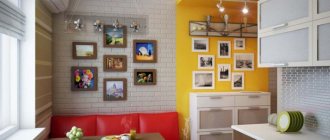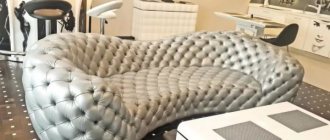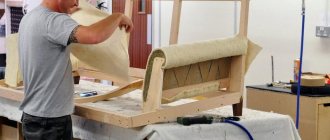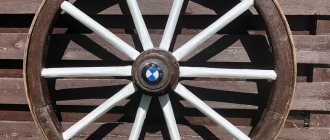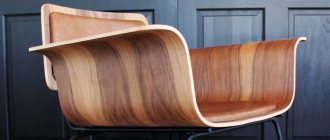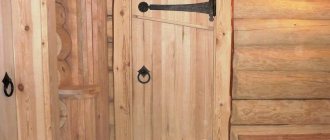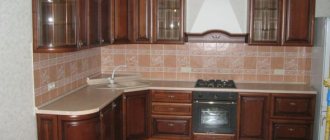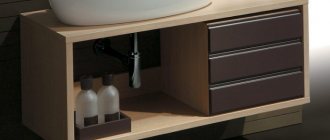Backgammon is an ancient Eastern game. The exact place of their origin is unknown, but they are already about 5,000 years old, which is confirmed by historical manuscripts. The oldest board for the game was discovered in Asia Minor, in the town of Shahri-Sukhte. Scientists have determined that the thing was created approximately 3000 BC. e. The same board was found in the tomb of Tutankhamun.
One of the legends says that one day the inhabitants of India decided to test the resourcefulness of the Persians and presented them with chess. They believed that they would not understand the rules of this unusual game. However, the sage from Persia was able to reveal the secret and in response sent them his game, which the Indians could not solve for 12 years. Bozorgmerkh sent them nothing more than a game of backgammon (translated from Persian “backgammon takhte” means “fight on a wooden board”).
The game spread to Western Europe thanks to the Crusaders in the 12th century. It gained popularity in the Middle Ages in European countries, where it got its name - backgammon. It simulates the impact of bones. The name "backgammon" was used among kings and nobles.
The game has gained considerable popularity in our time. Many craftsmen never cease to amaze with their new, original designs of inlay. This article will describe how to make backgammon with your own hands.
What does the board look like?
The board has a rectangular shape. It has 24 points (12 on each side). The board consists of two sides. Each point, as a rule, represents a narrow elongated triangle, the base of which is located along the edge, and the height reaches half the board. Six points on one side are called the player's house. Its location depends on the rules of the game. The board is divided down the middle by a vertical stripe called a “bar.” Usually knocked down checkers are placed there. Each player has 15 of them. The move is determined by a pair of dice - the charge. There are also two pairs for each player, as well as cups for mixing the dice.
Make a triangle pattern
Carefully and tightly connect the triangles to each other using small pieces of masking tape, which will be removed before sticking the set onto the base.
1. Take a straight strip of veneer with straight edges, which will serve as a ruler to align the triangles when assembling. To assemble each quadrant (quarter) of the game board, first use masking tape to adhere one of the light maple triangles, pressing its base against the veneer ruler. Now carefully glue the walnut and maple triangles together in pairs to form parallelograms. Tape them first to the edge of the ruler (photo F ) before connecting them to each other. Continue assembling until each quadrant consists of seven maple and six walnut triangles. The side free from masking tape will subsequently become the front side of the ornament.
Quick tip! Maintain the orientation of the triangles as you remove them from the stack and place them the same way they were placed: top side up, bottom side down. Any angular deviations when cutting out the narrowings will be mutually compensated when you assemble the parallelograms. Carefully remove the masking tape connecting the quadrant to the veneer ruler. In the same way, assemble the other three quadrants.
2. For the dividing strips (Fig. 1) , take two pieces of maple veneer measuring 80x230 mm. Read the Expert Tip and follow the directions to straighten the edges. Use the same method to align the maple veneer on the edges of the playing field halves.
3. Glue one quadrant to the edge of the divider strip, centered. The side with the adhesive tape (bottom) should be facing up. Transfer the triangle vertex position marks to the other edge of the dividing strip (photo G) and glue the second quadrant, aligning it with the marks.
Place the set sheet on the edge of the workbench and, aligning the square with the vertices of the dark triangles, make marks on the other edge of the dividing strip.
Cover the entire surface of the playing field with tape. Avoid overlapping stripes to ensure even pressure when applying the kit to the base.
Quick tip! Make sure the playing field is square by measuring its diagonals. If their sizes do not match, try turning one of the quadrants over and then transfer the tape to the opposite side.
In the same way, assemble the second half of the playing field, connecting the remaining quadrants with another dividing strip. Cover the entire surface of the set with tape (photo H) and remove the pieces of tape from the opposite (bottom) side.
Line up the edge of the steel ruler with the tops of the outer maple triangles and use a sharp knife to trim the game board to the final size.
4. Trim each half of the playing field to a final width of 191 mm (Photo I, Fig. 1) and align the newly formed edges. Cut two 48mm wide maple veneer strips, line up the edges, and apply masking tape to one edge of each set (Figure 1).
Note. Maple stripes form the side margins to accommodate compartments in which checkers and other game accessories are stored. In our case, the diameter of the checkers was 32 mm. If your checkers have different sizes, change the width of the side stripes and the dimensions of the box accordingly.
Glue the playing fields onto the base
1. Prepare two bases A for the playing fields, cutting them out of 6 mm thick MDF, four pressure plates from 19 mm thick MDF and one piece of mahogany veneer measuring 255x432 mm. Apply white PVA glue evenly to the base and place a sheet of veneer on top. Cover the veneer with a sheet of wax paper and clamp the bag between two 19mm thick MDF boards. Once the glue is dry, remove the clamps and glue the veneer onto the second playfield base.
Quick tip! A cheap foam paint roller will help you quickly and evenly apply a layer of glue to the base.
2. Use a saw to cut both bases to their final dimensions (see “Material List” at the end of the article). Place the router in the table and secure a cutter in its collet for making a 6 mm wide rebate. Rout the folds along the entire perimeter of each base on the side that is not covered with veneer, adjusting the overhang of the cutter so that a 3 mm thick ridge is formed along the edge. The amount of overhang of the cutter depends on the thickness of the glued veneer and it will most likely be a little more than 3 mm (Fig. 2).
Apply a thin layer of glue to the base. Use enough clamps to distribute the clamping pressure evenly.
3. Now glue the veneer game board onto the other side of the base (photo J ), carefully aligning the edges of the set with the folds. Just as before, use wax paper, pressure plates and clamps. Let the glue dry and glue the game board onto the second base.
What is the main thing when carving on a backgammon board?
In most cases, carved backgammon, the dimensions of which are indicated above, are made in the classical style with its inherent flat reliefs. Even beginners will be able to do this kind of work. Half the success lies in the right design. Ornaments with plants or arabesques became widespread.
For example, consider panels made of alder. On one side they are veneered with ash. If you want to do this part of the work yourself, it should be noted that the veneer is applied only on one side. After drying, the panel will bend towards the veneer. To avoid getting a similar result, you should glue plain paper, or even newspaper, on the opposite side. When the glue dries, there will be no deformation in this case. When working with panels, it is recommended to place them on polyethylene from packaging with soft inflatable pimples. This will protect parts from damage during operation.
The film is placed with the smooth side facing the workpiece, otherwise during operation the chips will get stuck in the pimples and can damage the surface. When applying tone to a material, you may get an undesirable effect.
Transferring a drawing
When the plywood is prepared, it's time to choose a pattern. If you look at modern backgammon, you will notice that ornaments with dragons, plants or arabesques are very popular.
The choice should be approached with special attention so that the design matches the plane of the future board. It is necessary that symmetry, so important for the game, be maintained. On the outside, the ornament can be large in size, but on the inside you shouldn’t do this, because there should be room for points.
The drawing is transferred to plywood using carbon paper. To do this, place a copy and a sheet of paper with a drawing on the board. All this is secured with tape and the outline is outlined with a simple pencil. If some parts of it remain undrawn, you should complete the image completely.
The points must be measured well using a ruler. They must be the same size. You need to draw them with a pencil on the inside of the workpiece.
Selection of background for thread
At such a stage as selecting the background for the thread, there are two methods:
- The classic method involves cutting along the contour of the design with a knife, followed by sampling the background using flat chisels. It should be noted that when working, the knife must enter the wood at an angle of 90 degrees. If you cannot keep the knife perpendicular to the material being prepared, then it is permissible to tilt it slightly at an arbitrary angle away from the leaves of the ornament. Then, when working on the thread, you can correct the design that is distorted for this reason.
- The second method is to select the background using a hand router and a finger cutter. The undoubted advantage of this method is the speed of execution and the accuracy of maintaining the required right angle along the edge of the ornament. The selection of the background around all elements is carried out clearly and at the same level. Hands do not strain during such a labor-intensive process. The disadvantages include the need to use a router. Working with it is only possible in a carpentry workshop, as it is noisy and creates excessive dust. The depth of the background pattern is approximately 5 mm. Those places where the cutter could not reach should be trimmed with a knife or flat chisels. Here the rules given in the first method are followed. You will still need to work with your hands.
Start by preparing the veneer
1. To create the board playing field, cut strips of walnut and maple veneer measuring 38x191 mm, making 30 pieces of each color. Quick tip! To carefully cut the strip using a sharp knife along a metal ruler, place a flat piece of hardboard or plastic underneath.
2. From scraps of 13mm thick hardwood, cut four top plates measuring 38x254mm and four bottom plates measuring 51x254mm. In the four top plates, make mounting holes with a diameter of 4 mm at a distance of 25 mm from the ends.
Distribute the cut veneer strips into four stacks of 15 pieces each and, with the edges aligned, sandwich them into a bag between the top and bottom plates (Photo A) . Secure the top plates using 4.5x25mm brass screws. Install a 60- or 80-tooth blade into the saw and file down one edge of each bag (Photo B). At the end of the plate, draw an arrow pointing to the newly sawn edge. Turn the bag 180° and, pressing the straight edge against the longitudinal stop, file the second edge of the bag to a final width of 33 mm. Do the same with the remaining packages.
CHOOSE THE VENEER, FOLD IT INTO A STACK AND CUTE IT INTO PARTS
Orient the veneer strips with a diagonal pattern so that the cutting line coincides with the direction of the grain (see photo E). Remember how to properly pet a cat or dog.
Adjust the crosscut (miter) fence to a 5° angle and insert it into the left groove of the saw table. Saw the bags to a length of 203 mm. The arrow on the end of the bag should point forward.
Pressing the wide plate of the bag against the rip fence, level the edge of the stack of veneer strips in several passes, gradually removing thin layers of material.
3. Apply strips of tape to the sides of the veneer bags and plates. Saw off the marked end, shortening the package to a length of 203 mm using a transverse (angular) stop turned at an angle of 5° (photo C) . Lock the end stop (stopper) onto the cross fence plate to cut the remaining bags to the same length.
4. Read the article “Sleds for cutting out narrowings on small parts” and make the device described in it. Then place marks on the end and side of the package of parts, setting aside distances of 32 and 165 mm, respectively. Align these marks with the edge of the cut in the sled (photo D ) and trace around the bag to secure the fence and dies to the base. Now file each veneer pack as shown in Photo E.
Place the package of blanks on the base of the slide, aligning the marks with the edge of the cut. Trace the package with a pencil to determine where the stop and dies are attached.
Fine-tune the rip fence to align the cut in the base of the slide with the saw blade, and cut the stack of parts at an angle. Complete the cut just short of the rear edge of the slide.
Arabesque processing
After sampling the background in all hard-to-reach places, you should start working on the ornament. Start from the bottom and top edges of the panel. The intersections of the parts are cut with a knife. The depth is taken to be 2 mm. By trimming with a flat chisel, the lower and upper points of the design are revealed. Thus, the ornament will be intertwined.
Then future profiles of the drawing are drawn. Using a knife or a flat chisel, a convex part of the profile is formed. Then, using semicircular chisels, the concave parts of the profiles are processed. The operation should be repeated with the central part of the ornament. The drawing needs to be worked on a second time, correcting all the shortcomings.
Saturday, July 20, 2013
How to make your own dice? DIY dice.
In this post, I want to talk about my experience in making dice at home. You can find this article by searching: - How to make dice yourself? — Instructions for making dice. — How to make six-sided dice at home for playing dice or backgammon?
Since I am involved in historical reconstruction, I was interested in making simple dice for medieval games, for example for the German game - Gluckshaus - “House of Happiness”.
Unfortunately, the first bones did not turn out the way I wanted, but more on that later.
The choice of material for the dice was simple, since my workshop works with exotic woods, I chose African wood - niove.
The drill attachment will significantly speed up the work and allow you to quickly process the edges of future dice.
We move on to putting numbers on the edges of the cube, but first we will choose how they will look, will they be just dots, like on Viking dice, or will they be concentric circles, like on ancient Roman dice? From the materials that I found, approximately 70% of medieval bones have numbers indicated by concentric circles (1-2 circles and a dot in the center), and such bones have been found for more than 2000 years!
Once you learn how easy it is to cut, connect, and glue straight triangles onto this game board, you'll be sure to want to add geometric designs to other projects. Simple tools and simple techniques make making this board fun.
- Overall dimensions: when opened - 530x432x32 mm; closed - 264x432x64 mm.
- Materials: walnut, maple and mahogany veneer; MDF 6 mm thick; mahogany.
Mastery
- Learn how to cut several layers of veneer into parts for geometric patterns.
- Learn to carefully join veneer without visible gaps.
- Make two identical pieces of the game board by sawing through a closed box.
Adding tone
Do-it-yourself backgammon involves tinting. For this process, you can use water stains. Usually one color is used, which is diluted to three shades: light, medium and dark. In this case, two types of wood were used: ash and alder. To emphasize the beauty of each of them, two stain colors were used: dark oak and teak. Teak is suitable for ash, and dark oak is suitable for alder.
First of all, the carved panel must be tinted. The lightest paint covers all the carvings. Then, without allowing the stain to dry, a medium shade is applied to the milled edges of the panel.
The next stage involves coloring the background. It is covered with the darkest tone. They do this with caution. The paint is applied with extreme care so as not to get on the light part. Painting should begin from the center of the selected background area, moving to the rising carved parts. In this case, a minimal amount of dye is taken with the brush.
The wooden surface should be allowed to dry, and then the other side should be coated with teak stain on the ash veneer. The carpentry components of the boards are coated with the same tone.
After the stain has dried, the raised lint is removed using sandpaper. The main thing is not to damage the paint on the sharp edges that remain on the threads after working with chisels.
The entire board is coated with colorless varnish. For this purpose, a two-component matte varnish is used.
Choosing a tree
First of all, you need to choose the wood from which the chess or backgammon box will be made. Typically one of four types of wood is used:
1) beech is a non-sharp material, and it is easy to tint it in any color, which is why it is preferred by many;
2) pine is a fairly easy-to-work material, especially if you are planning a light-colored box;
3) oak is valued for its hardness, but during processing an element may break off;
4) ash has a beautiful pattern, and is also slightly inferior to oak in hardness.
The second option for making backgammon
The manufacture of such a product as carved backgammon was described above. Another method involves burning patterns.
To make backgammon with your own hands using the second method, you will need:
- sanded plywood (two sheets of light wood with a thickness of 4-8 mm, size 480x240 mm);
- two wooden slats measuring 30x10 mm, 220 mm long for holes;
- PVA glue;
- stain;
- varnish;
- jigsaw;
- burning apparatus.
Origin of the game
Backgammon is a very old game. According to scientists, it appeared in the Ancient East about 5,000 years ago. The very first board was found in Shahri-Sukhta (region of Asia Minor); research suggests that it is about 3000 years old.
Backgammon came to Persia from India. There is even a legend about this. A long time ago, the Indians decided to test the Persians and sent them chess , believing that they would never solve this game. But one Persian sage understood its meaning and, in revenge, sent the people of India his game - backgammon, over which they puzzled for about 12 years. “Nard Takhte” translated from Persian means “fight on a wooden board,” characterizing the complexity and intensity of the game.
In the Middle Ages, thanks to the Crusaders, it spread to Western Europe, and also gained popularity in European countries in the 12th century. It was then called backgammon, which meant hitting the bones. Representatives of kings and nobility played it at the courts.
This fascinating fun has reached our time. If you study the diagrams on how to make backgammon with your own hands in pictures, you can understand that this will not cause any difficulties. The main thing is to choose the right materials and make the drawing correctly.
Progress
The process of making a backgammon board in this case involves the following steps:
- The work begins with the design of the external and internal sides. The prepared drawing is burned on both sides according to the selected cliche.
- Wooden slats are glued into a tenon and glued along the perimeter of the board.
- Holes for chips are cut out in wide slats and also glued.
- Next, the hinges and lock are installed.
- Finally, the board is coated with three layers of colorless varnish.
FakeHeader
Comments 73
How long did it take to mill?
Well, if you don’t take into account the rest of the cutter, then probably 3 hours
Cool instrument you have!
I tried it, the wood bends when you cut out a large layer, it’s still advisable to glue the “houses” and crosswise, then they will be straighter
I’ve already figured out how to deal with this, if it works, I’ll post it in the next part)
Listen less, do more. Your work, do it yourself, you will correct mistakes on the next craft.
You can cut off your arms with a grinder and a circular saw; I know a lot of people like that because I’m a carpenter myself!
An angle grinder and a circular saw are not compatible. First of all, I don’t recommend working like that.
You're cool, of course, but this is just the way of the samurai and it's not a fact that everything will turn out exactly as it should. I would glue 2 layers, one blank is the cover and the second with a cutout for the playing field, it would be faster and smoother and glue them together with mounting glue under a press. There will be one whole
That's exactly what I did
Grinder and circular saw - goodbye hands, hello disability. I really don't recommend it.
I Helena won the inlay from the Turks dry, we parted with the board not high...
Now I want too)
The grinder is really tough. When I needed to cut a furniture board, but there was no parquet flooring, I cut it with a router against the stop and that’s it. Quite quickly. Smoother than with a jigsaw and safer than with a grinder. The grinder burned out, and I hope I don’t buy a new one. It’s a very capricious instrument)) Good luck in your endeavors and be careful!
Thank you for the luck)) Yes, it’s all clear... I’m not a carpenter and I cut it with what I had at hand
And the router was awesome and smooth and clean: D
If TB is at the highest level, then don’t use a Bulgarian with such a circle!
Question for professionals: why did the board start to bend? and how to deal with it?
Usually the tree bends and bends when you use wood that is not completely dried. As it dries, it begins to curl. But furniture panels, as a rule, are sold already dried. Perhaps you came across a shield glued from different layers of pine, while it was 18 mm thick it held its shape, you reduced the thickness and the glued part from the core, which was tighter, began to bend and pulled the remaining, softer parts of the shield. Maybe you just got a damp shield, then it dried out and became twisted.
The second board has yet to begin to bend
Are the boards made from the same board? If not, it means that the storage conditions of the tree were incorrect, the tree was moistened and now has dried out and is twisted. You can try to fix it by heavily moistening the boards (soak them in boiling water for 20-30 minutes) and putting them under a press until they dry completely. But there is no guarantee, because... pine has a fiber structure of different densities.
The boards are made from the same panel. But what if the temperature difference in the garage could be due to this?
The difference is unlikely, but the humidity is yes. It absorbed moisture and began to lead.
If it doesn't level out under a load to dry?
I tried it, it just cracks(((
If it doesn't level out under a load to dry?
If you don't soak it in boiling water, it won't help. And if you soak it and put it wet under a press, then, firstly, the press must be suitable, and secondly, it depends on how the fibers go and where the board is led. But, to be honest, the game is not worth the candle - there is a lot of hassle, and the result may not live up to expectations, it is easier to redo it using dry wood and without milling the shield, everything is done easier and of better quality.
Usually the tree bends and bends when you use wood that is not completely dried. As it dries, it begins to curl. But furniture panels, as a rule, are sold already dried. Perhaps you came across a shield glued from different layers of pine, while it was 18 mm thick it held its shape, you reduced the thickness and the glued part from the core, which was tighter, began to bend and pulled the remaining, softer parts of the shield. Maybe you just got a damp shield, then it dried out and became twisted.

